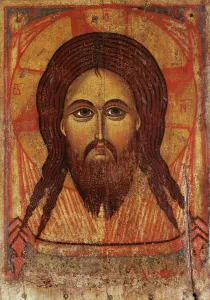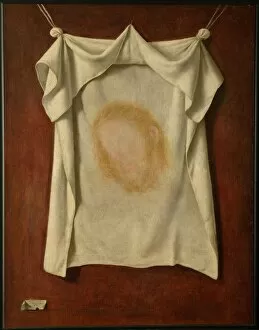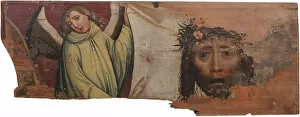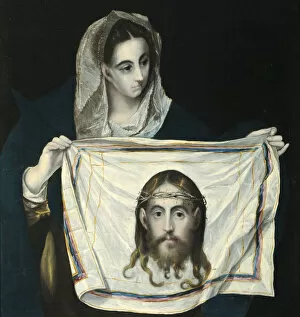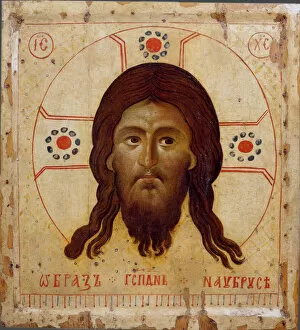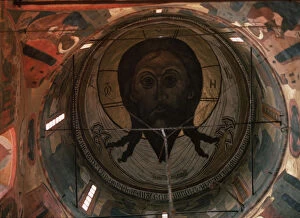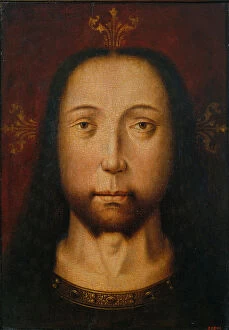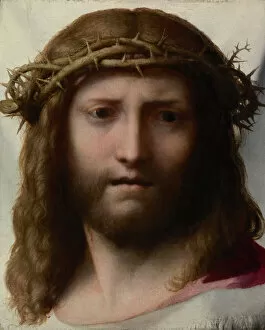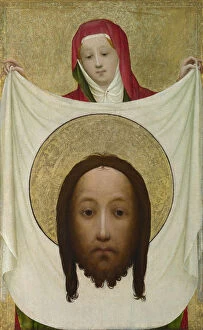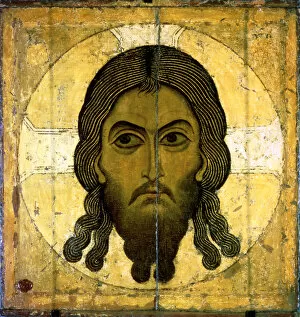Mandylion Collection
The "mandylion" is a powerful religious symbol that has been depicted by various artists throughout history
All Professionally Made to Order for Quick Shipping
The "mandylion" is a powerful religious symbol that has been depicted by various artists throughout history. Also known as the Holy Face, it holds great significance in Christian tradition. Dating back to the 13th century, Byzantine icons portrayed this sacred relic believed to be an imprint of Christ's face on a cloth. One such depiction is found in the tempera on wood painting titled "The Holy Face, " created between 1200-1250. This early representation showcases the solemnity and reverence associated with the mandylion. Another portrayal of this holy relic can be seen in "The Veil of Saint Veronica, " an anonymous work from the early 16th century. The artist captures Saint Veronica holding up her veil imprinted with Christ's face, emphasizing its importance as a revered artifact. Renowned painters like El Greco and Robert Campin also contributed their interpretations of Saint Veronica and the mandylion. El Greco's works from both 1586-1595 and his earlier period demonstrate his unique style while depicting this sacred object. Master Bertram's triptych artwork called "Triptych of The Holy Face" showcases intricate details surrounding this religious iconography, highlighting its spiritual significance within Christianity. Derick Baegert's piece titled "Saint Veronica and a Group of Knights" depicts not only Saint Veronica but also emphasizes her role as a protector alongside knights who revere the mandylion. Russian artists have also made significant contributions to portraying this holy image. Ancient Russian frescos dating from 1652-1666 adorn the dome painting in Moscow Kremlin's Archangel Michael Cathedral, showcasing their devotion through artistry. Aelbrecht Bouts' painting entitled "The Holy Countenance" portrays another interpretation influenced by circle members during c. 1500s, reflecting their fascination with capturing divine beauty through artistic expression. Lastly, Russian icons like those created in 1447 continue to depict the Holy Mandylion, showcasing its enduring significance in religious practice.

